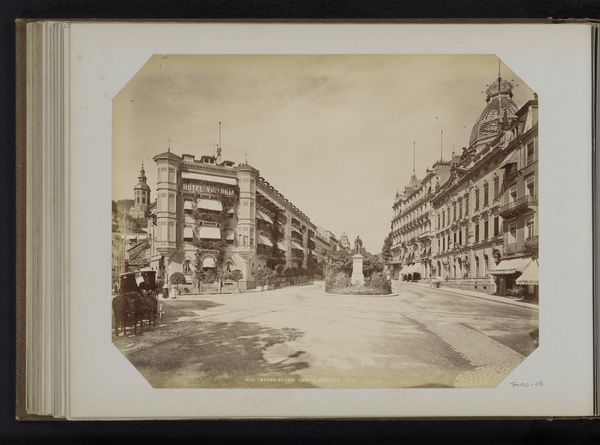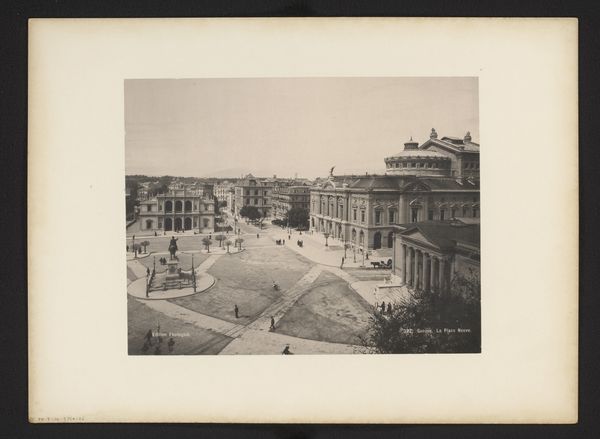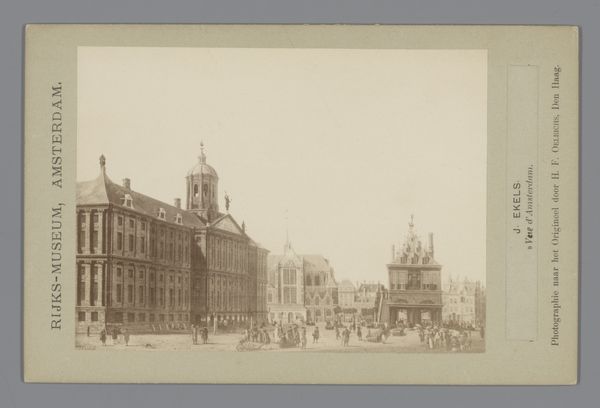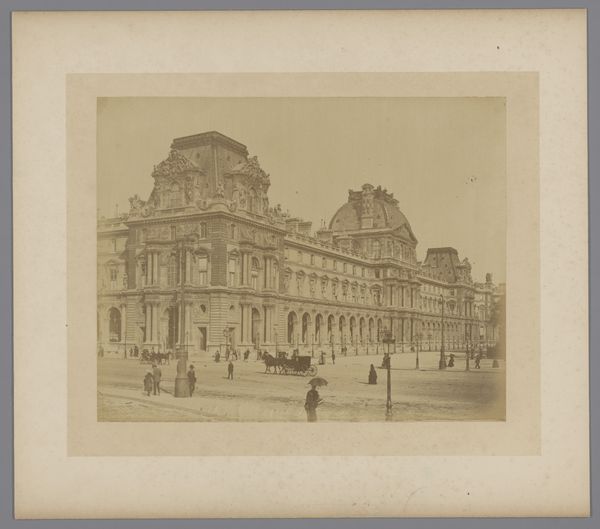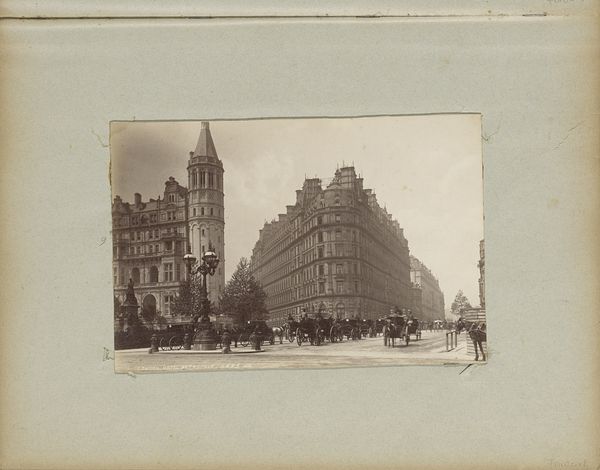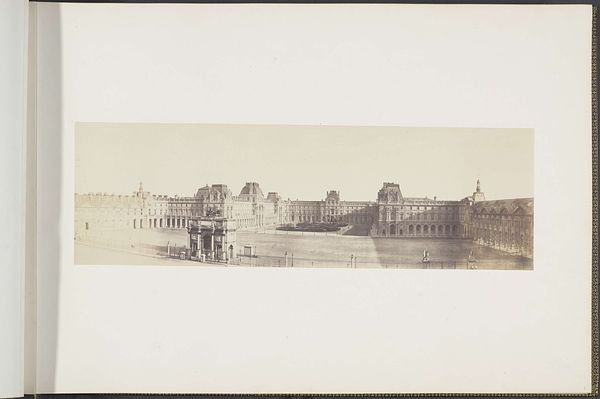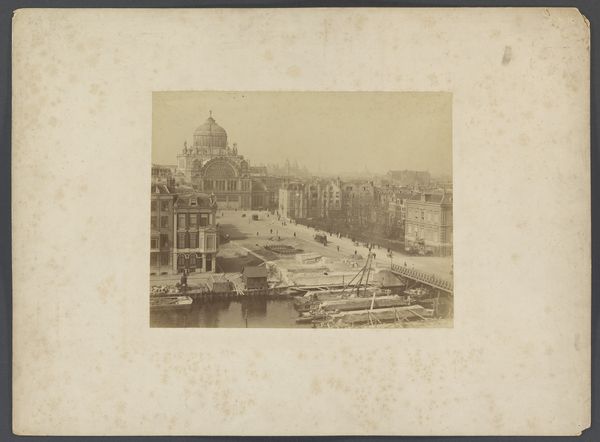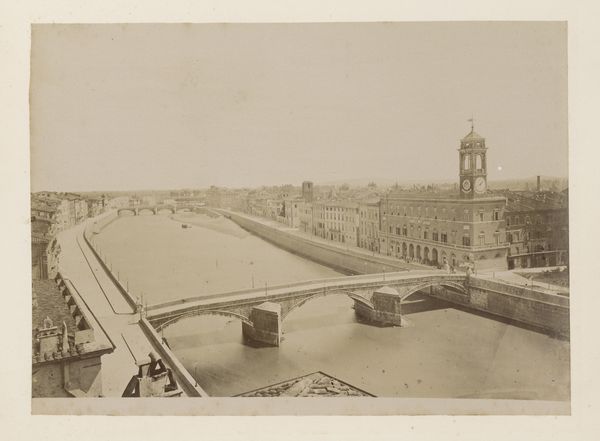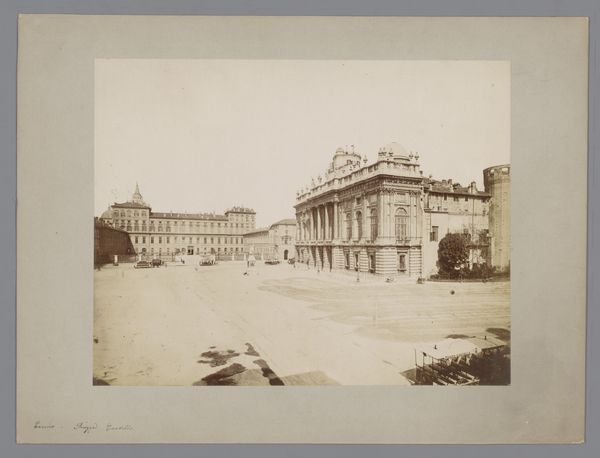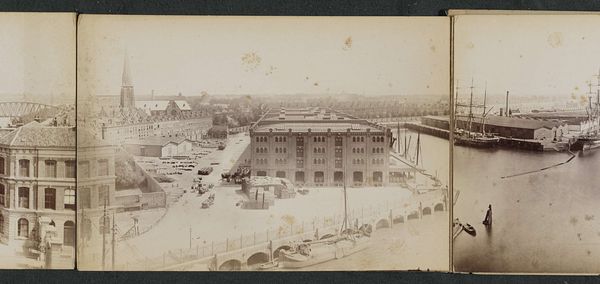
Dimensions: height 258 mm, width 355 mm
Copyright: Rijks Museum: Open Domain
Curator: Welcome! Before us hangs an albumen print photograph titled "Gezicht op het Musée du Louvre te Parijs," dating from 1890 to 1898. Editor: My initial reaction is of a world poised between eras. The grandeur of the Louvre juxtaposed with the stark, almost unsettling emptiness of the plaza. It speaks to the power structures looming over the everyday citizen. Curator: I see a fascinating study in perspective. The elevated vantage point flattens the architectural details, transforming the Louvre into a geometric tapestry of light and shadow. The albumen print lends a warm, sepia tone, emphasizing tonal contrast in the receding planes. Note how it transforms three-dimensional reality into something meticulously structured. Editor: Yet, the emptiness feels deliberate, doesn't it? The composition seems to suggest something lacking. Consider the historical moment; anxieties of industrialization, class division... Were Parisians able to experience such cultural institutions on a regular basis, or were those places meant only for some? This vast public space feels so unavailable. Curator: While your sociopolitical reading resonates, I'm drawn to the repetition of form. Look at the windows, the rooflines - rhythmic progressions echoing across the facade. There's a visual syntax at play, where each element contributes to the Louvre's identity as pure form. The linear organization defines its essence. Editor: It's hard for me to separate it from its social implications. Architecture isn't merely visual; it dictates movement and access, which is social commentary. By not emphasizing the movement, isn't the photograph masking its hierarchical meaning as a government entity? Or does the plaza merely amplify such symbolic tension? Curator: It could certainly be interpreted that way. I, however, am intrigued by the tension between the geometric rigor and the softness of the albumen print itself, this dance of science and art defining, ultimately, its aesthetic essence. Editor: Ultimately, though, shouldn’t art prod us? Isn’t it an expression of someone who lived in their respective, socio-political- historical period, conveying messages from there? Curator: And perhaps here that message is silence—that is, pure form—the better to contemplate existence itself! Editor: Very well. Though, to me, the emptiness speaks far louder than form ever could.
Comments
No comments
Be the first to comment and join the conversation on the ultimate creative platform.
